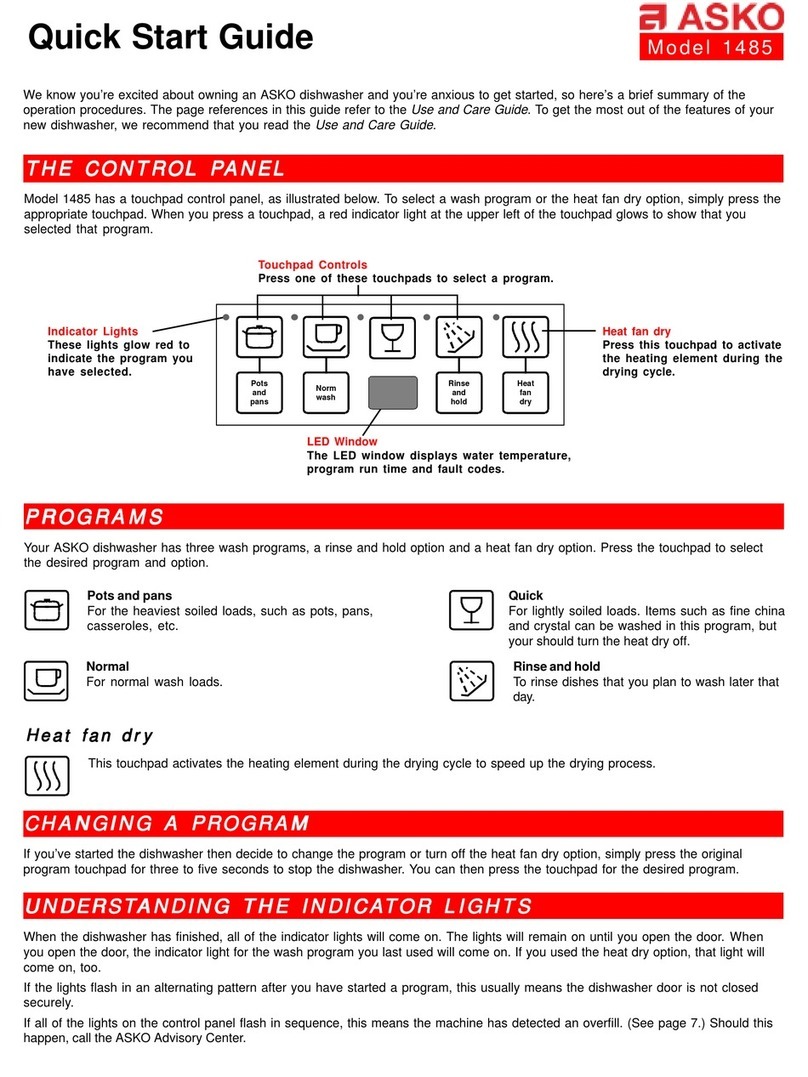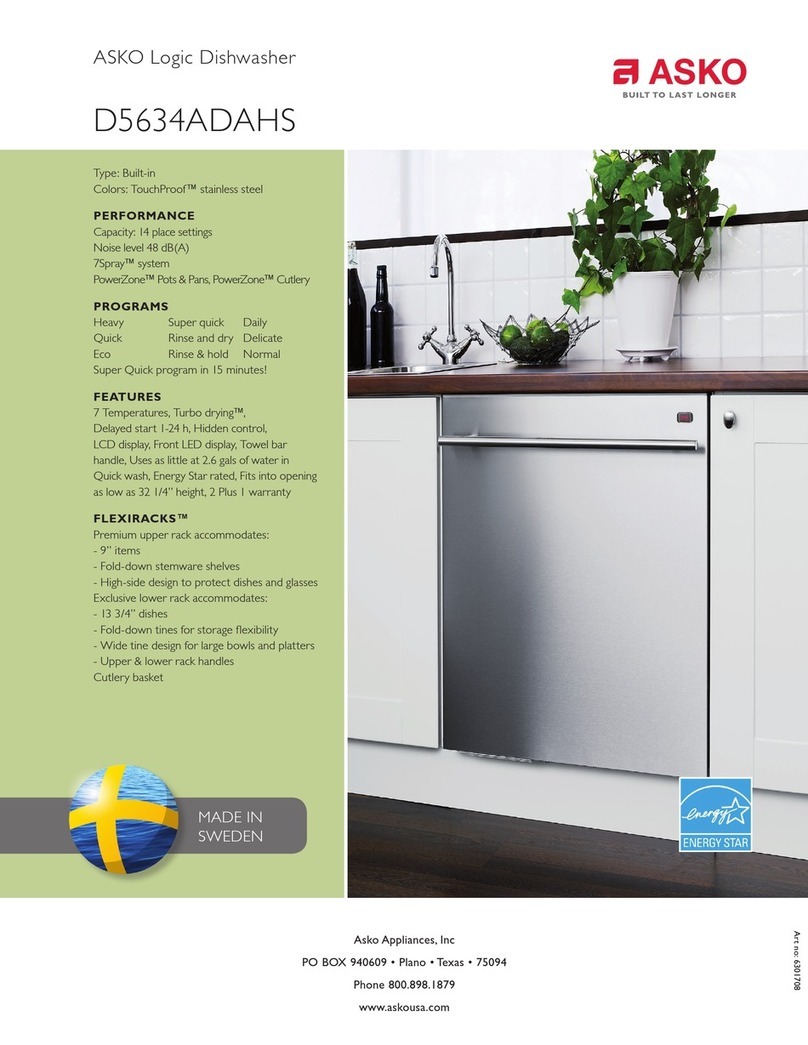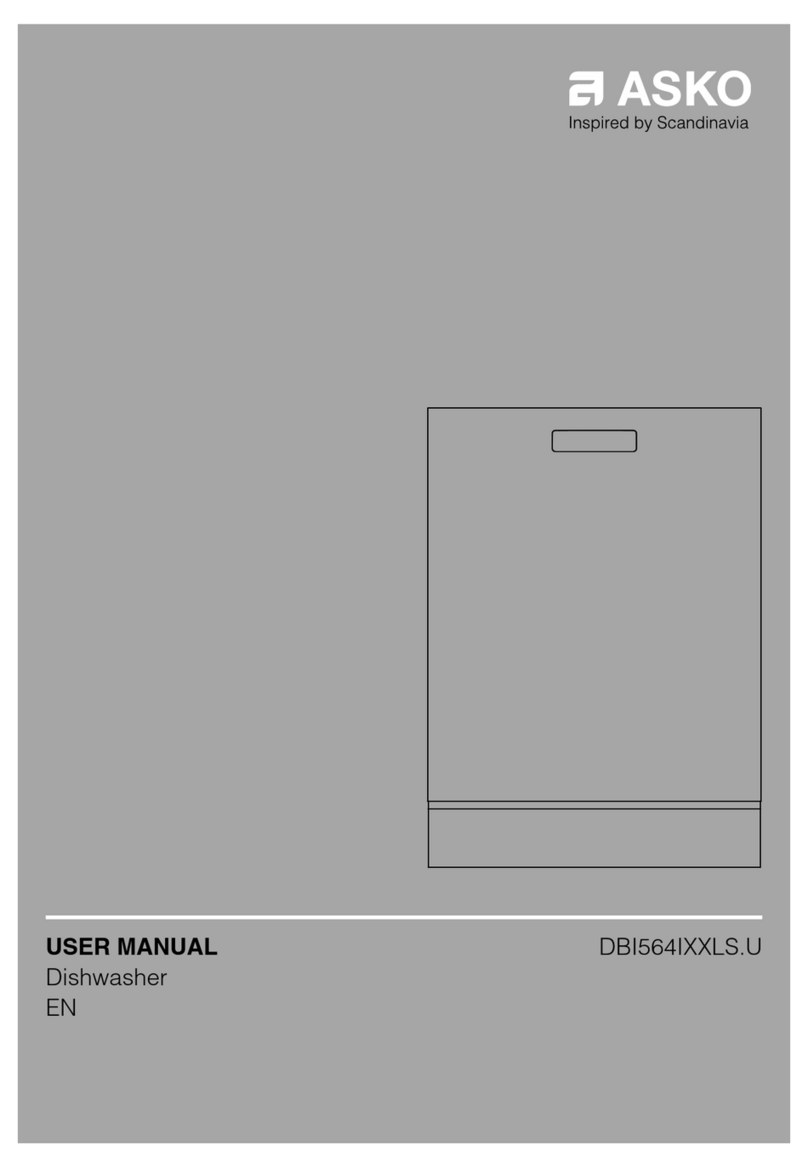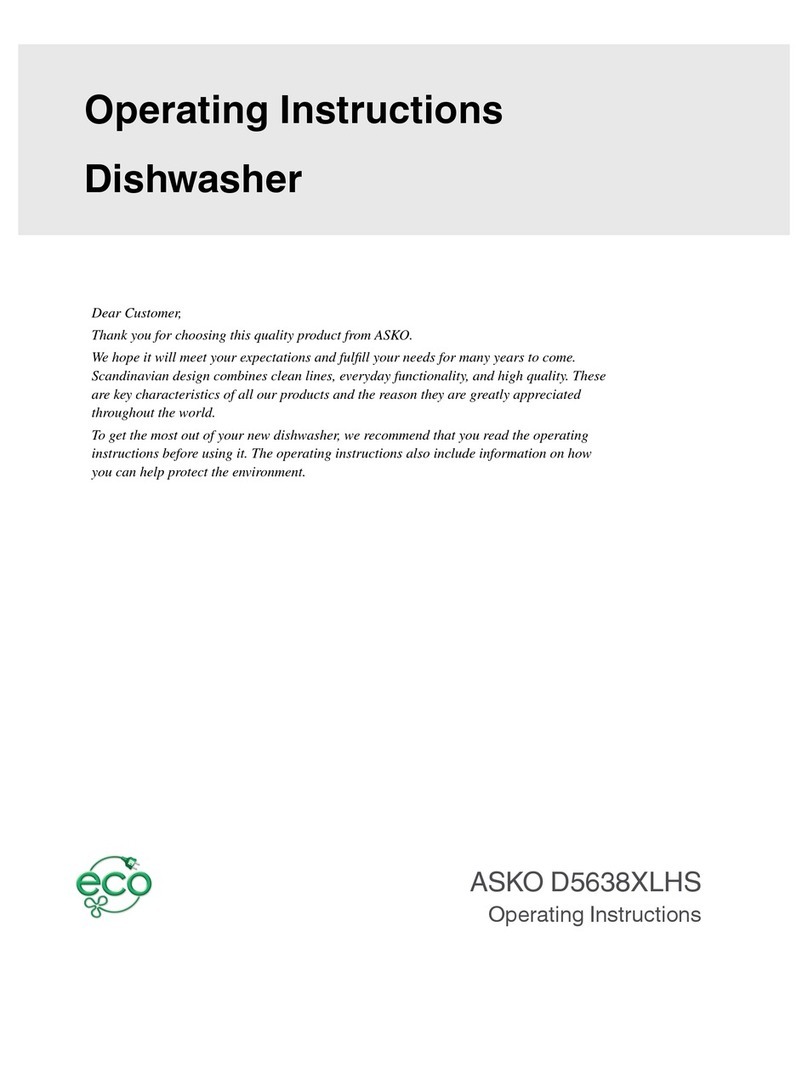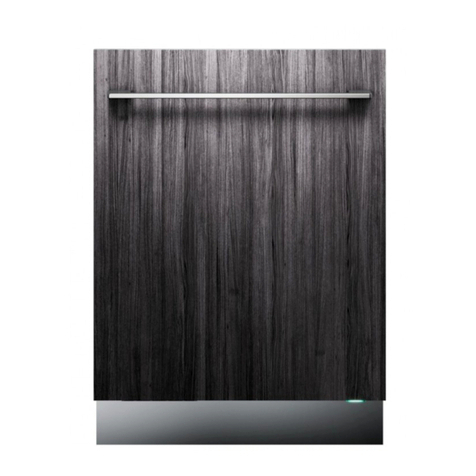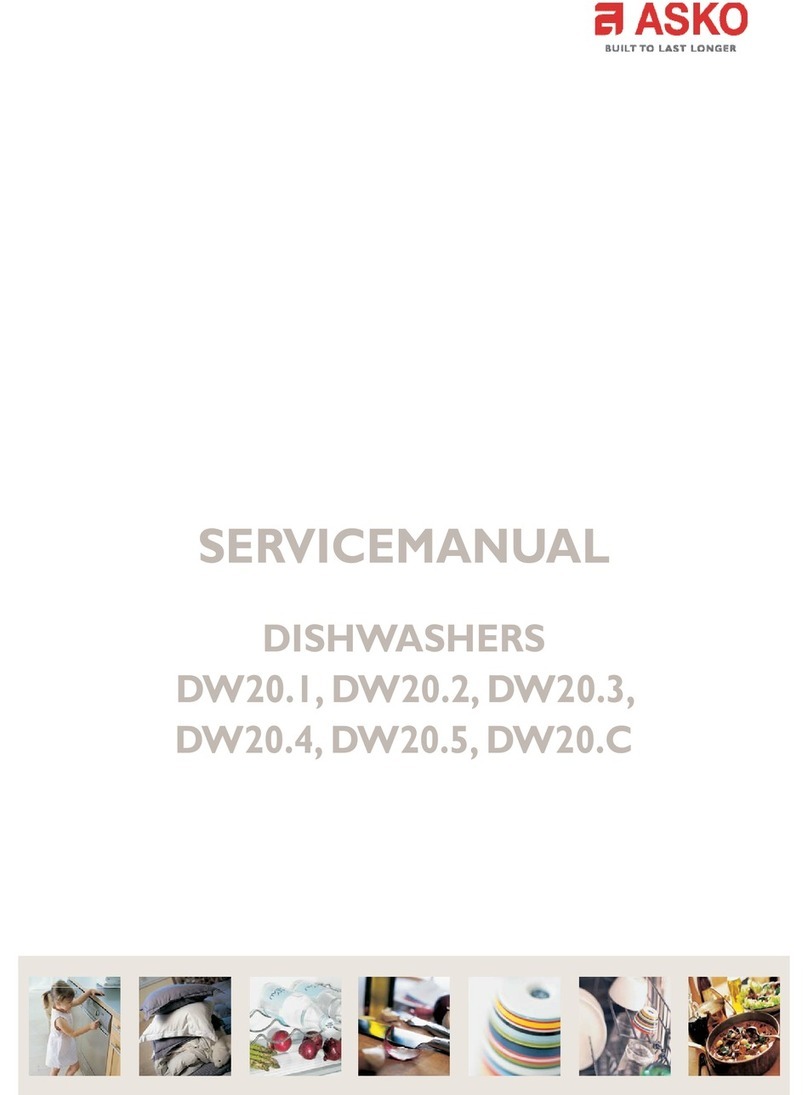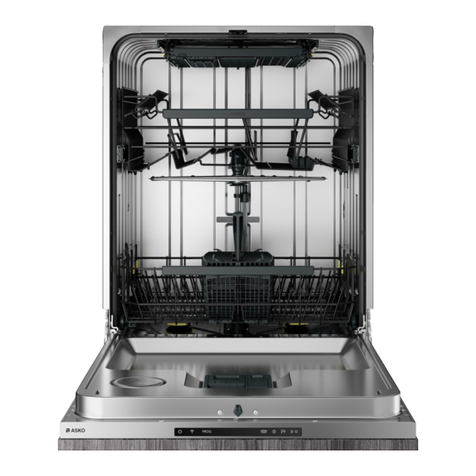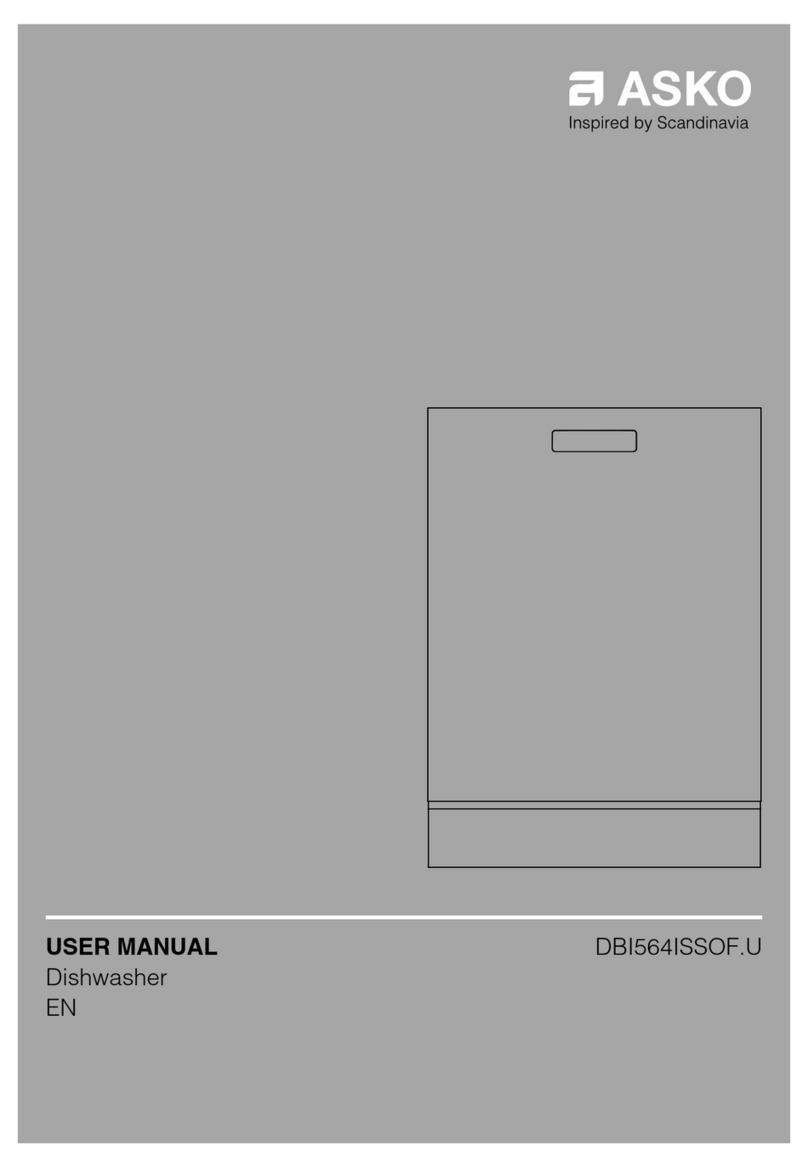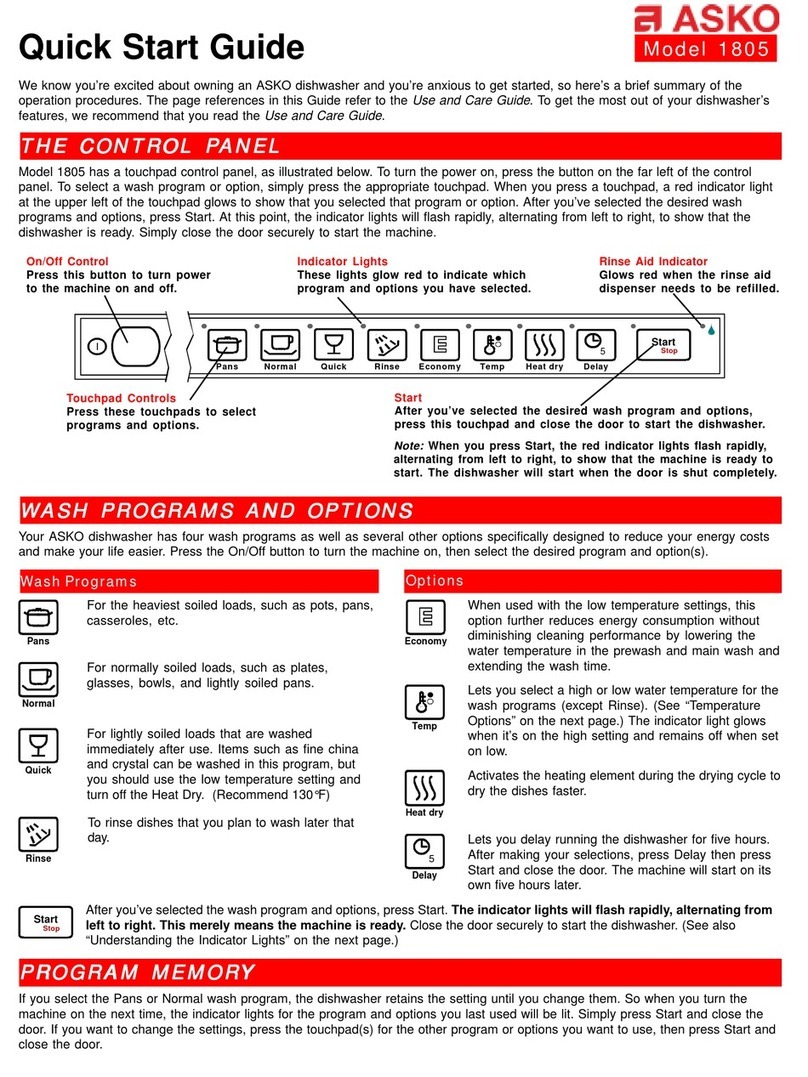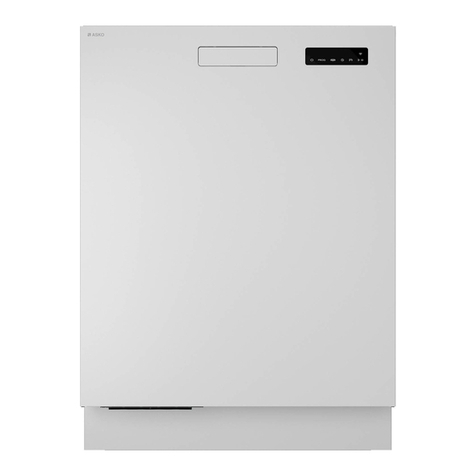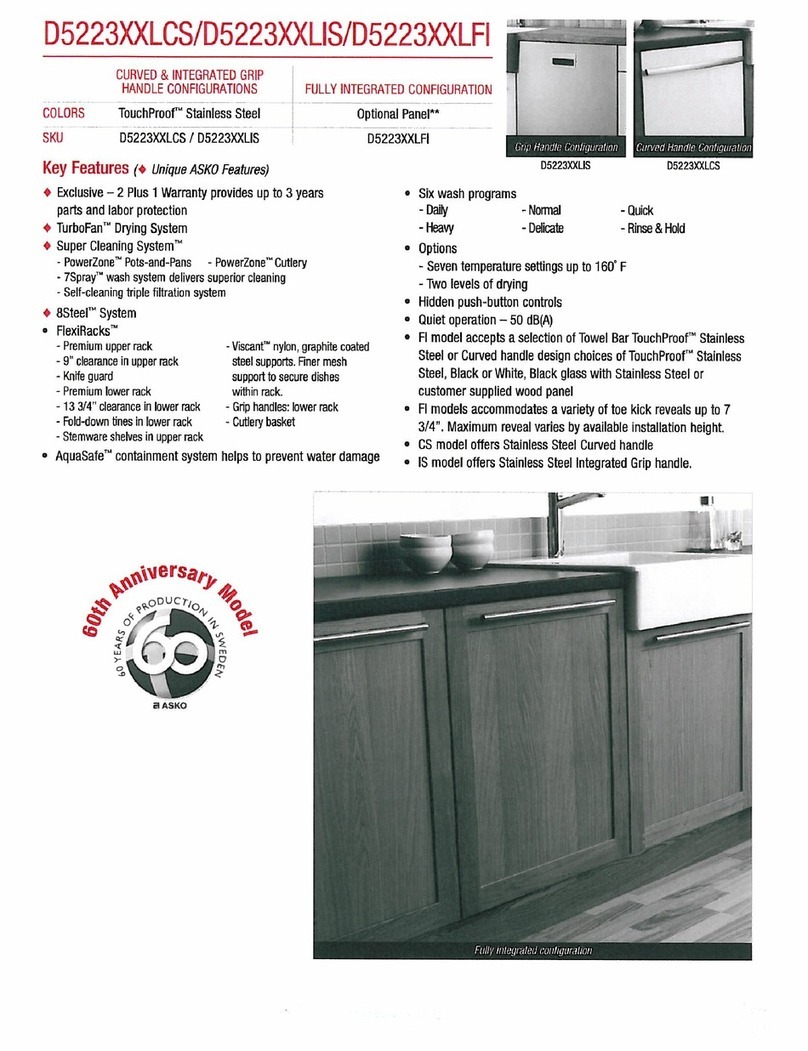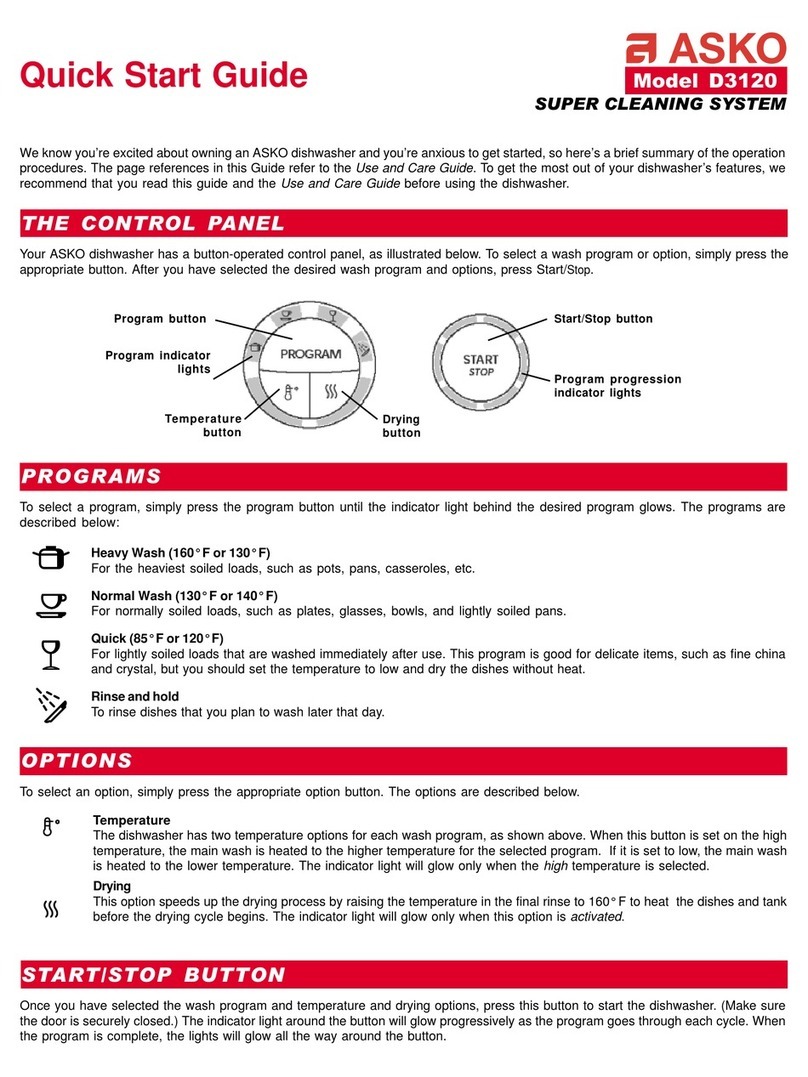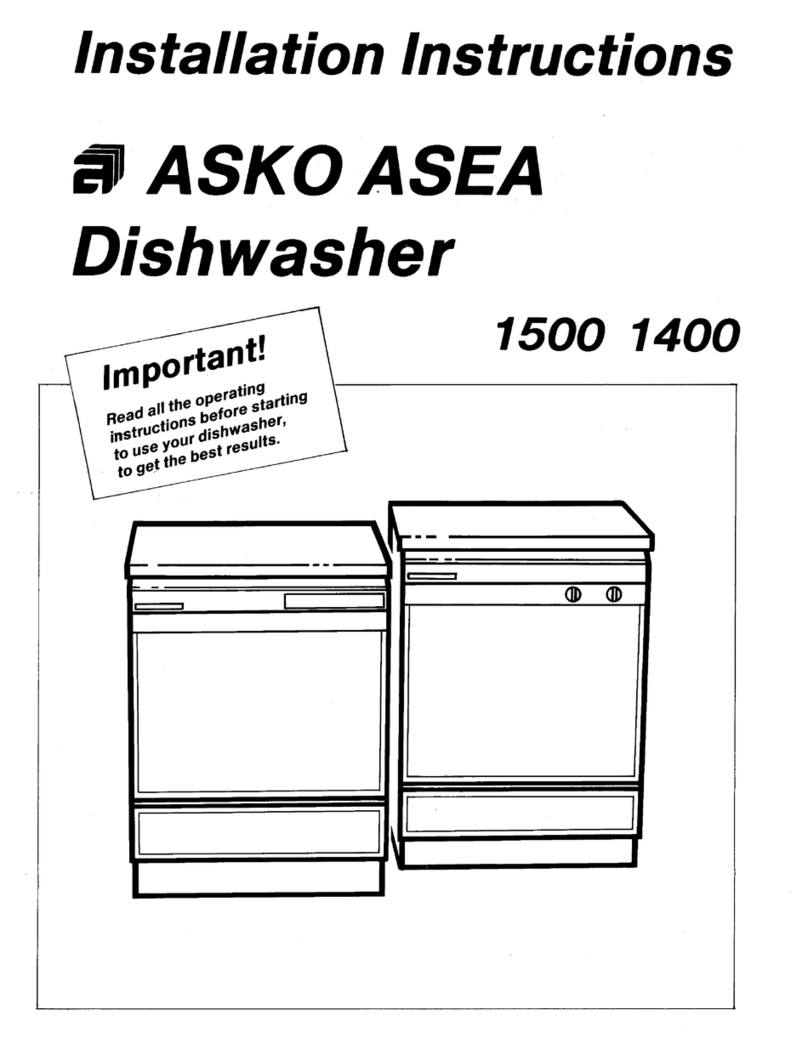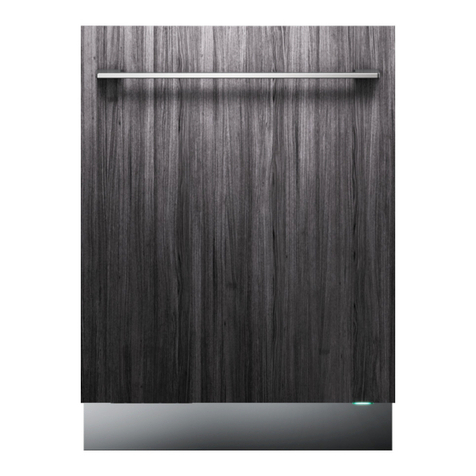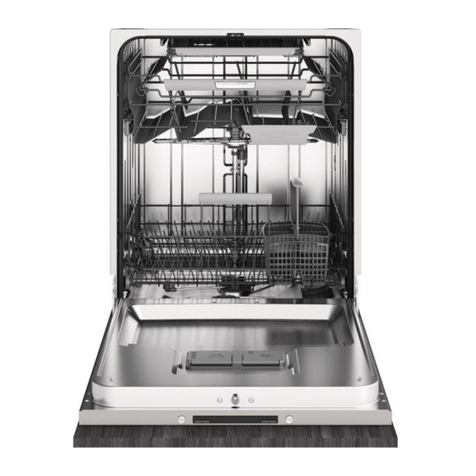
Important safety
instructions
SAVE THESE INSTRUCTIONS FOR FUTURE REFERENCE
WARNING!
When using your dishwasher, follow basic precautions, including the
following:
•Read all instructions before using the dishwasher.
•Use the dishwasher only for its intended function.
•Use only detergents or wetting agents recommended for use in
a dishwasher and keep them out of the reach of children.
•When loading items to be washed:
–locate sharp items so that they are not likely to damage the door
seal, and
–load sharp knives with the handles up to reduce the risk of
cut-type injuries.
•Do not wash plastic items unless they are marked “dishwasher
safe”or the equivalent. For plastic items not so marked, check
the manufacturer’s recommendations.
•Do not operate the dishwasher unless all enclosure panels are
properly in place.
•Do not tamper with controls.
•Do not abuse, sit on, or stand on the door or dish rack of the
dishwasher.
•To reduce the risk of injury, do not allow children to play in or on
a dishwasher.
•Under certain conditions, hydrogen gas may be produced in a
hot water system that has not been used for two weeks or more.
HYDROGEN GAS IS EXPLOSIVE. If the hot water system has not
been used for two weeks, before using the dishwasher turn on
all hot water faucets and let the water flow from each for several
minutes. This will release any accumulated hydrogen gas. As the
gas is flammable, do not smoke or use an open flame during this
time.
•Remove the door to the washing compartment when removing
an old dishwasher from service or discarding it.
•Read the grounding instructions in the installation instructions.
General
•Do not run the dishwasher while you are out of the home.
•Do not store or use combustible materials, gasoline, or other
flammable vapors and liquids in the vicinity of this or any other
appliance.
•Disconnect electrical power to dishwasher before servicing.
•Repairs should be done by a qualified technician.
WARNING!
PROPOSITION 65 FOR CALIFORNIA RESIDENTS
Cancer and Reproductive Harm –www.P65Warnings.ca.gov
Child safety
•Always keep small children away from the machine when it is open.
There may be some detergent residue left inside the machine.
•Always close the door and start the dishwasher as soon as you put
in the detergent.
•If dishwasher detergent gets in someone’s eyes, rinse them with
plenty of water for at least 15 minutes.
•Should a child swallow dishwasher detergent or rinse aid, give
plenty to drink immediately, i.e., one or two glasses of milk or water.
Do not try to induce vomiting. Seek medical advice immediately:
Call the National Capital Poison Center at 1-800-222-1222.
WARNING!
Dishwasher detergents and rinse aids are corrosive, so always keep
them out of reach of children.
Activate child lock (Kid Safe™)
You can activate the child lock (button lock) to prevent children from
starting the dishwasher. See the chapter Settings.
Installation
See the chapter Installation instructions.
Winter storage/Transport
Store the dishwasher above freezing and avoid long transport distances
in very cold weather. Transport the dishwasher upright or laying on its
back.
Overflow guard function
The overflow protection starts pumping out the machine and turns off
the water supply if the water level in the dishwasher exceeds the normal
level. If the overflow protection is triggered, turn off the water supply
and call the Customer Care Center.
Packing material
The packaging protects the product during transport. The packaging
material is recyclable. Separate the different packaging materials to
help reduce raw material use and waste. Your dealer can take the
packaging for recycling or direct you to the nearest recycling center.
The packaging is comprised of:
•Corrugated cardboard made from up to 100% recycled material.
•Expanded polystyrene (EPS) with no added chlorine or fluorine.
•Supports made from untreated wood.
•Protective plastic made from polyethylene (PE).
Disposal
The dishwasher is manufactured and labeled for recycling.
When the machine has reached the end of its service life and is to be
disposed of, it should immediately be made unusable. Pull out the
power cable and cut it as short as possible.
Contact your municipality for information about where and how your
dishwasher can be recycled correctly.
3
